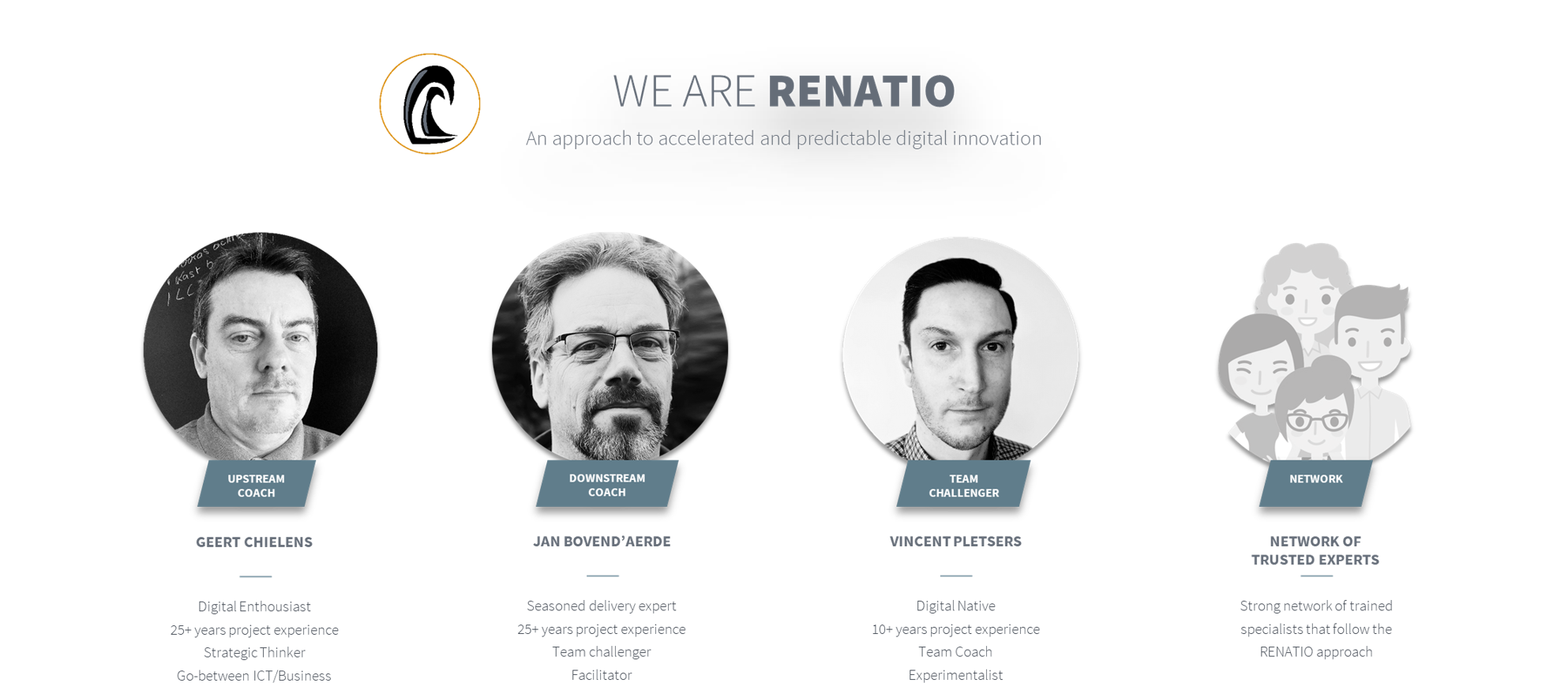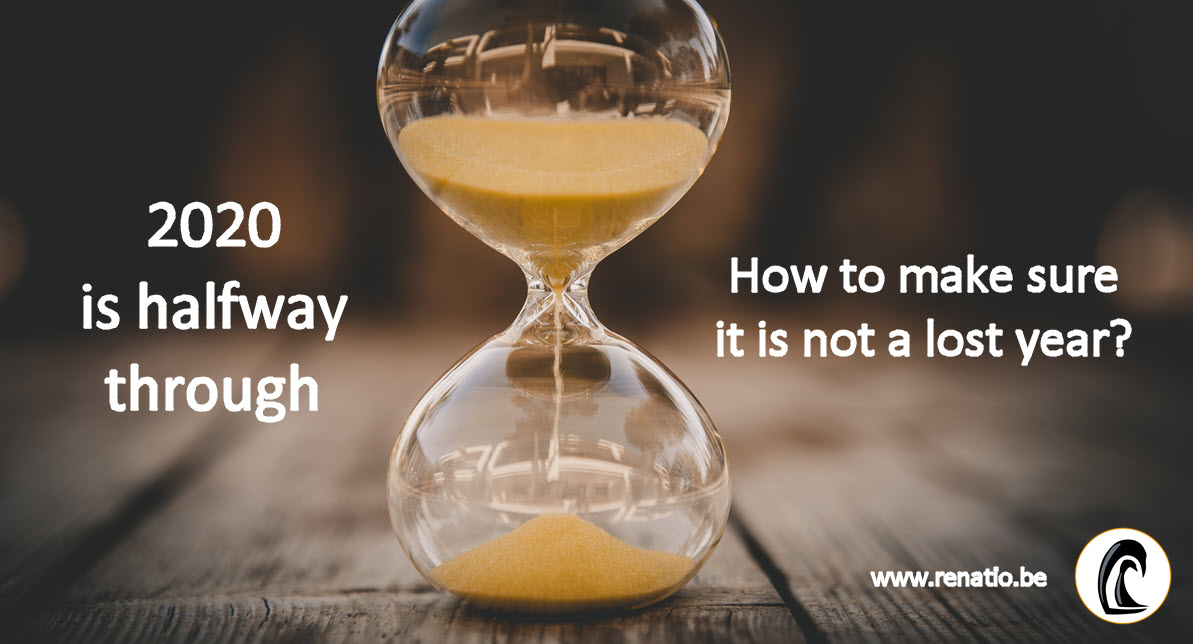2020 is halfway through - how to make sure it is not a lost year? by Renatio
Posted by Geert Chielens in Agile Management on 06/05/2020

Lockdown measures are gradually getting loosened throughout Europe, each country at their own pace. The past months we’ve all been going through some cycles dealing with the present tsunami wave that hit us all by surprise:
- Initially we all denied this wave was building up and about to hit us in the most brutal way possible.
- Next the wave started rolling in on our beach, and anger boiled up while thinking of the destructive consequences (both personal and economical).
- Like any good enterpreneur, followed by bargaining in an attempt to start facing the consquences.
- Depression hitting due to resultless efforts, combined with lack of perspective and unanswered questions on how to resurge
- Getting out of the crisis we reach a state of acceptance, in order to be the Phoenix [1]

[1] Phoenix: A long-lived bird that cyclically regenerates or is otherwise born again. Associated with the sun, a phoenix obtains new life by arising from the ashes of its predecessor.

Lockdown what did it bring us?
Trend watchers have always been warning about being ready for a digital tsunami. Little did we know that the actual tsunami would be anything but digital, however forces every single one of us to rethink the use of digital tooling that has been around for the last 20 years or so.
The tsunami that has been hitting us, is a direct result of the fast-paced world world we have been living in the last decades, dominated by an ever-growing lack of balance between the environmental limitations of our planet and mankind’s strive for comfort and prosperity.
The lockdown has had a (forced) radical impacted our way of working, our value perception and our way of living all together. How much of this will prove to be temporary in nature? Will we gladly return to our old ways? Both most likely.
Let’s have a look at what changed around us?
- Environmental amaze
A forced lockdown light, where the economy came to a halt, homeworking was the norm, but we were all still allowed outside provided social distancing was taken care off.
Cars were immobilised for weeks. Air traffic was reduced by 95%. We rediscovered to joys of silence and the joyable sounds of nature all kinds. A decade of environmental preaching failed to teach us, became obvious in matter of weeks as nature reclaimed the territory of theirs. At least a majority got to think about the sense or non-sense of our pace of life on steriods. - Importance of local
Out of boredom, we massively started walking. In our respective neighbourhoods forceably. Re-discovering our neighbours, the local craftsmen and experiencing the richness of our neighbourhoods. While I find the popular call to shop with Belgian retail (as opposed to our evil neighbouring countries) very opportunistic and unhealthy. Especially knowing that export is our number 1 economical engine. Imagine if all our neighbouring countries would have the same reflex, what would become of our economy? It actually re-emphasised the richness of our quarter’s and the customer-centricty of our local retailers. - Social network
Certainly in medium and large towns, we hardly knew our neighbours. Today we show sympathy for all professions we took for granted. Obviously health workers, but also the garbage men, post men, courier services and get out to clap hands for 20 minutes. Leading to entertaining discussions withe the neighbours we have more in common with than we knew. Musical talents are shared and often appreciated. We all got out of our ego-centric cocoons and re-discovered the immediate social network. - Refound agility
An economical standstill, massively impacting health measures forced each and everyone out of their comfort zone. Massive technology adoption, as opposed at considering it as job threathening. Homeworking to allow striving for harmony between private and professional life. Overnight re-thinking of processes, driven by economical survival or by health safety. None of the buts and the “it cannot be done’s” survived. The openness to attempt a different way of working was priority n°1 on the agenda. - Forced digitalisation
Last, but not least. All who considered digital secondary, as in “it will become important some day. But probably not in my life time” or as certainly not applicable for their line of business, were now faced with an economical challenge where physical trading is not an option. Suddenly the entire population went digital. On a massive scale it showed that 20+ years after the emergence of ecommerce, we are not ready. Scale is key to profitability of the online offering and while scale happened overnight, every single food retailers struggled with scaling. Leaving poor customer experiences. Logistics partners claim the same need for scaling, and when it happens every single parcel is delayed and prices are increased to serve return on investment. The list is endless but few are the successfull examples.
Whether or not these changes are permanent or not, fact is that we will look differently at customer centricity. When choice is within reach, customer experience does really make the deciding difference for survival. Technology capabilities will be looked at as enablers, allowing better harmony & value-creation in our every day lifes. Also clearly prooving that doing what you do every day via new technology, is basically a lost opportunity.
VUCA
Present challenge, now more than ever, is to manage the Volatility, Uncertainty, Complexity and Ambiguity.
As many well-versed gurus have discussed the characteristics of VUCA at length, we rather focus on being hands-on. It is a build up to a narrative towards things you can do tomorrow. In order to still make the difference this year!
The question which repetitively gets asked, is when are we going back to normal?
Wrong question obviously!Business agility is the key ingredient to survival. Making the most of this bizarre year, is to develop the ability to re-invent yourself, develop the intrinsic ability to be adaptive and respond to customer needs swiftly.
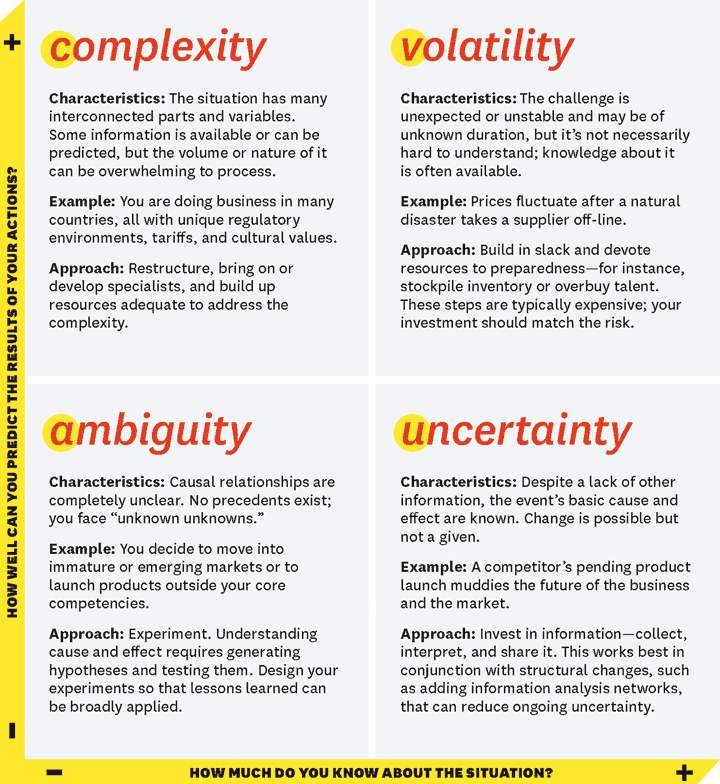

By now the standard reaction for sure is, we are pretty agile. We’ve been adapting to market conditions and our customers for the last x years!!
We’d challenge that!
For your last product improvement, how long did it take to define it and to get it released to your customers?
Chances are that you don’t know how long it actually took. Most likely too long. The latter is in fact not the issue. The issue is the lack of predictability. This lack of predictability comes on the one end from the lack of transparency of your factory (IT implementation cycle) and even more importantly is the total abscence of predictability on getting the new feature approved by the chain of command.
Conclusion: If you want to be the Phoenix that is able to become relevant, stay relevant, than you need this business agility.

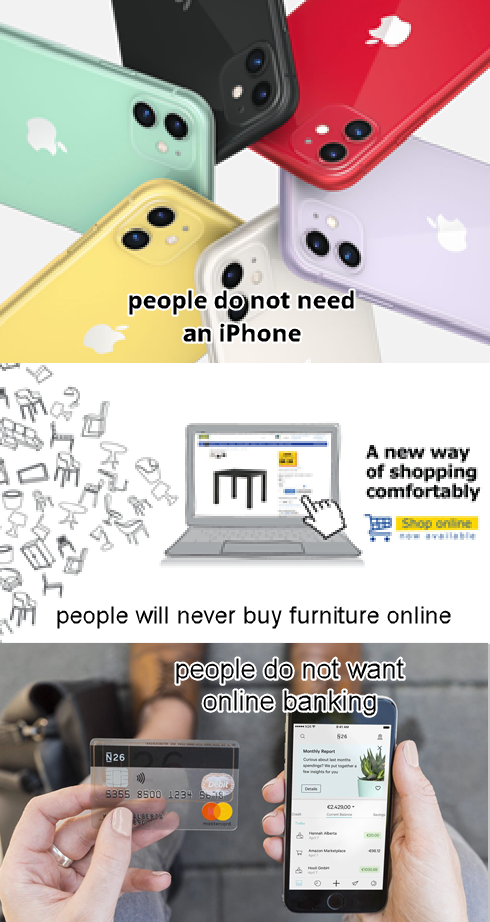
What is business AGILITY?
When answering this question, often the answers get complex and dive deeply into methodology.
It’s rather simple though. The organisation’s ability to be able to act quickly on changing conditions [2].
The ability to change is based on:
- Customer Centricity
The key to success is to involve your customers closely right from the start and validate the notion of business value, based on a relentless stream of experiments/tests.
Be aware that assumptions kill. As such we should not be making decisions, but we should be designing experiments. We should not dictate a vision, but should set out a grand challenge. - Cadence & Flow
When designing experiments, they should be characterised by the predictability within which they are brought to our customers at regular and especially predictable manner. Avoiding imposed deadlines originating from management meetings, in full disconnect with the (in-)existance of technological capabilities, as well as operational challenges and capabilties. Requiring an integrated method that delivers the tools to business and IT stakeholders to answer questions around delivery swiftly without lengthy analysis and estimation cycles, preventing customer value delivery. - Collaboration
Generating customer value and delivering this value in a predictable manner can only be achieved provided that collaboration is established through transparency and methodologies allowing early and close collaboration between all stakeholders. Design sprints (combination of design thinking and iterative agile methodology) are one out of many techniques that can be used to establish this - Governance
Unless a hands-on portfolio management is established, driven by by business value. Nothing more complex than creating a definition, unless you make it surge organically through transparent discussions between all stakeholders on the one end and validate those assumptions by means of experiments with your customers on the other end. Also splitting your portfolio management between exploration (about new offerings, new products, innovating product features) and exploitation (about improvements).
Now what?
Because of the lock-down, the global economy has come to a standstill and business leaders tend to take actions to freeze their companies in some sort of artificial coma so it can survive the harsh winter to be woken up after the crisis. Despite the fact that those freezer tactics seem a reasonable thing to do, those companies and their leaders are making a life-threatening mistake.
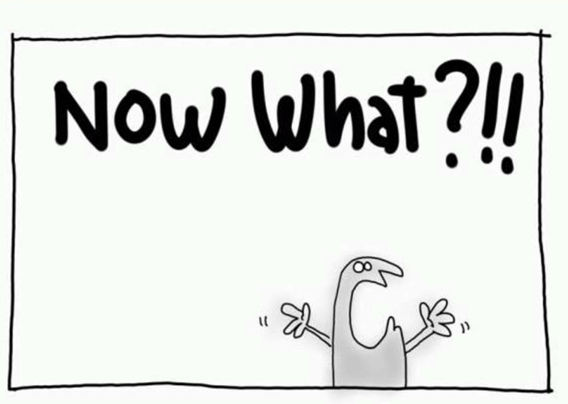

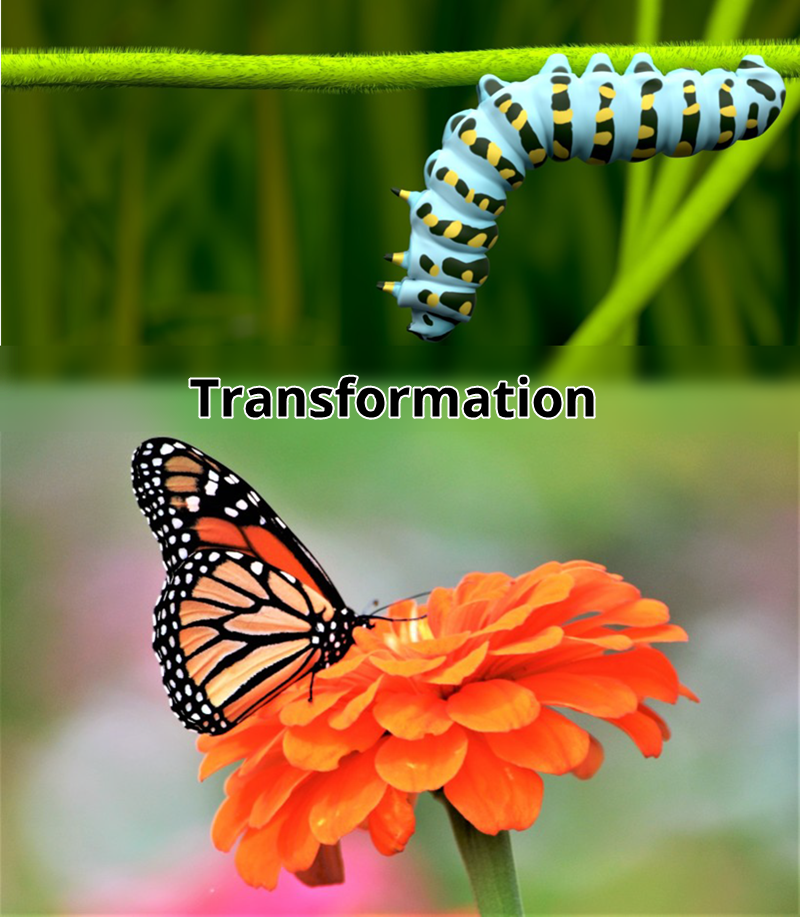

Change versus transformation
Let’s not bush around the bushes, the much dreaded tsunami has hit us and we’ve established that reviving the old company is not going to cut it.
Are we talking about change or are we talking about transformation? Isn’t it a synonym for the same?Lots of change initiatives have been wrongly labelled transformation in the past.
Change is about fixing the past. It is modifying relatively simple things. It is all about creating a better version of the past. It’s all about increments of improvements. Real transformation on the other hand is about creating a new future, without the constraints of the past.
Don’t get me wrong, they (can) are both difficult. But there are important differences between the two, that leaders often don’t realise. Many times they learn the differences too late.
Change is when the problem that needs solving is relatively simple and the current system needs an updating. Perhaps new technology or process updating. Change requires you to become familiar with the current situation and the work to make things faster, cheaper, leaner. The success is often measured by efficiencies and economies that are realised at the end of the effort, compared to where we started. When our future is better version of the past, we have undergone change.
Transformation on the other hand requires a break with the past and that is often difficult to accept, but it could offer great potential. In transforming we desing our future and invent ways to make it a reality. Transformation doesn’t describe our future by referencing our past. Transformation creates an entirely new future, without the constraints of the past. George Westerman from MIT once articulated it really well. He explained that when digital transformation is done right, it’s like “a caterpillar turning into a butterfly,” but when done wrong, “all you have is a really fast caterpillar.”He also pointed out that businesses that have become digital masters are 26% more profitable, and that digital transformation is driven by the leaders at the top of the organization.
What companies need to make it faster, cheaper, etc is different from undergoing a transformation to create a new future.
The outcome of change consists of economies and efficiencies as just mentionned. It is “only” a better version of the past. A better version of the past is inlikely to defend against disruptive innovation. Let alone to bring about any form of disruption.
So STOP and think for a moment: “Are your digital initiatives that you see around you, genuinly enough to secure a competitive advantage in the digital economy?” Too many companies are still caught up making fast caterpillars, instead of making butterflies!
This often misunderstoord reality is causing well-intentioned leaders to unknowingly leading there companies into obsolenscence. The delusion of transformation is when organisations think they are doing the right thing by implementing digital technologies, by calling it “transformation”. When in fact they are only undergoing change and proving what worked well in the pre-digital economy.
This delusion is the tendancy to label any project or program involving digital technology as digital transformation. Those initiatives will neither disrupt markets, nor protect against disruption. They allow firms to get a false sense of transformation security. When executives are led to believe that they are transforming their business. The reality for many firms is that they are using new technologies to create a slighthly better version of the past. Because transformation creates a new future, while change creates a better version of the past. That’s not gonna protect against disruption or disrupt!
In the book “Digital @ scale” from Jürgen Meffert and Anand Swaminathan from Mc Kinsey, they describe the concept of “digital sugar coating”. They explained how digital sugar coating is what companies are doing when companies produce social media campaigns or perhaps the collection of data that doesn’t get used. And believe that these activities are transforming their business.
Believing this as transformation is delusional and the time-bomb continues to tick for the companies that gain a false sense of security by undergoing these types of initiatives. Look at the companies that have undergone the consequences of digital sugar coating and the delusion of digital transformation. We’ve got ToysRus, Debenhams and many other examples. The reason I call out these 2 examples because both of them as very well established companies since long, announced months before the collapse the eminent success of the digital transformation and the positive impact on their businesses.
Some other internationally known examples, have faced critical roadblocks and failed their digital transformation efforts.
- GE created a new digital business unit but was focused on size instead of quality
- Ford started a new digital service that was separate from the rest of the company instead of integrating digital solutions
- Procter & Gamble didn’t consider the competition or impending economic crash
These missteps can spell doom for digital transformation, but all three companies managed to try again with better success.
To succeed these days, leaders need the mindset, money and capabilities to invest in continuous transformation and change. Or in other words to reach a state of business agility.
If you lack that the odds are great that you will join the corporate graveyard of ToysRus, Radio Shack, Payless shoes, Borders, Kodak and hundreds of others that have already been led to an early grave.
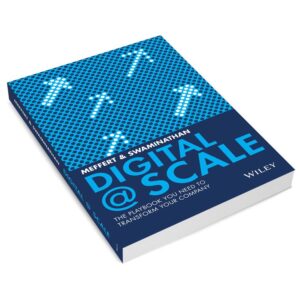


How do we make the most out of 2020?
You have been overwhelmed by the events. Maybe you were forced to start selling online while you thought in your line of business it might take some years before consumers would be interested in buying your product online. Alternatively your present online offering has been going through the roof and you have been struggling to keep up with the demand.
You’ve had your initial historic successes but you required to extend the rest of your business line digitally. Common to all is that as an organisation you were not equiped to be able to respond to sudden change in a fast and efficient manner. Leading to revenue losses, missed growth opportunities or serious operational struggles.
Salvaging 2020 is all about being ready for the next round of change. More importantly to anticipate and drive change to the extent possible. In other words, salvaging 2020 is about being courageous and show leadership to lead the organisation towards business agility and think about the day after tomorrow.
The old normal is not dead yet, but for sure is in decline. The new normal is not fully born. Covid-19 brought a serious boost and showed that digitalisation is now accelerated. Leaving us in the comfortable twilight zone, to make sure you are better equiped to surf the next wave.
Since your “shit of yesterday” has been forceably reduced to minimal levels, it is way more comfortable to change the wheel on your car as it is no longer speeding. Prepare the day after tomorrow, whith the forced bandwidth of presently reduced activities today and get rid of the “shit of yesterday”.

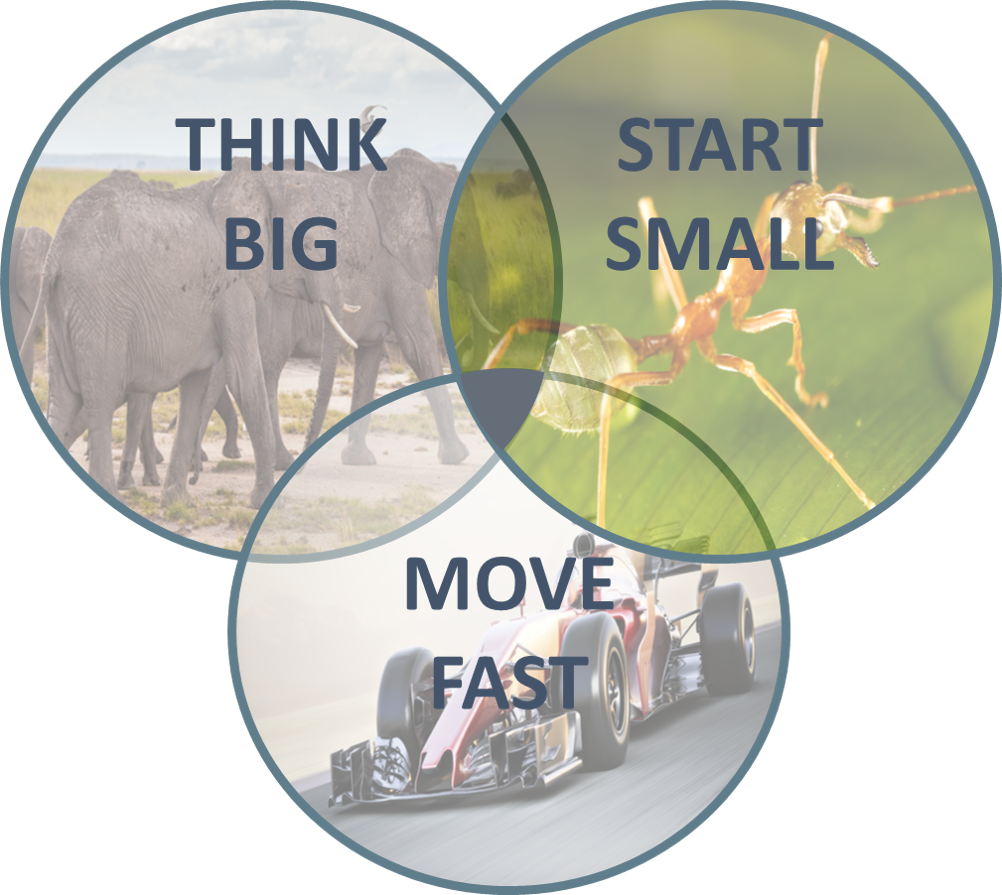
key transformation drivers
Building an effective digital value offering should be based on 3 key ingredient:
- Think big
Don’t restrain yourself based on all sorts of barriers, gaps and what more. Bring a broad variety of competences together to maximise the customer perspectives and maximise the insights. Using design thinking (preferably design sprint) to identify opportunities in an effective manner. - Start small
Any transformation is based off many assumptions. Assumptions kill, hence it is important to start small and define experiments or proof-of-concepts that allow to quickly validate these assumptions with real customers. - Move fast
Don’t bother about selecting the right technology and making future-proof technology decisions. Don’t bother too much about governance principles. Put speed over long-term goals and learn fast.
Experiment, experiment, experiment and experiment even more. Never think you are there! Never stop being curious.
From key principles to structural approach
A transformation is succcessfull when a company is able to react to changing market conditions. It is not about delivering projects, nor about delivering programs. These have a start and an end, with a fixed set of deliverables.
The guarantee to success in a transformation is based on delivering constant customer value, based on predictable flow.
What is needed to achieve the above-mentioned goals?
- Downstream process
A (digital) factory that is able to build product and features at a predictable pace, with a predictable quality. Predictability is key in order for the digital factory to become a true business partner that supports customer-centric thinking. As opposed to an execuction-oriented partner, that tries hard (and usually failing) to meet deadlines decided by executives lacking the operational insights. This responds to the need for think small and incremental. - Upstream process
The orderbook of the digital factory needs to be fueled at the same pace. Defining incremental features/value propositions based on business value. Business value that comes to live based on a relentless stream of experiments.
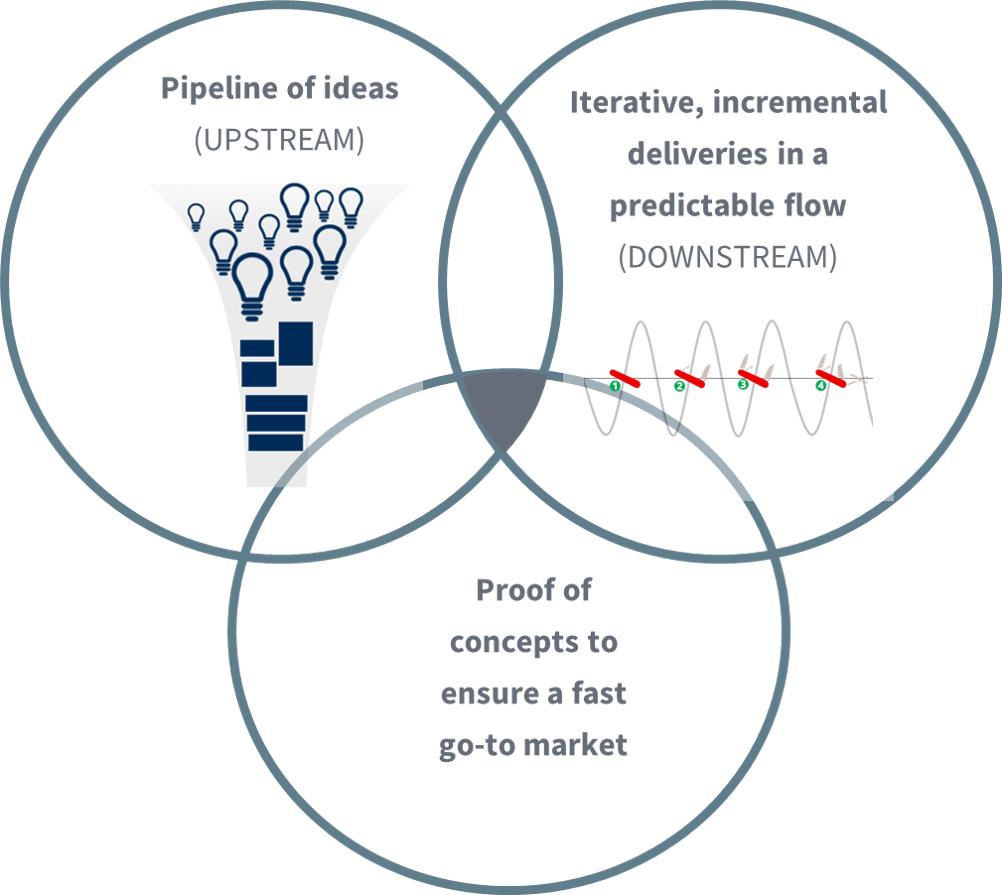
It is about going through a structured double diamond process to inspire, define and update your roadmap with a quarterly cadence. This responding to how Think big can be realised.
- Experiments/Proof-of-Concepts
A relentless stream of experiments that aim to test both customer adoption (hence business value), technological feasability as well as testing and introducing new concepts to which your customers were not (yet) exposed to before.

Digital transformation
Digital transformation is the evolving pursuit of innovative and agile business and operational models — fueled by evolving technologies, processes, analytics, and talent capabilities —to create new value and experiences for customers, employees, and stakeholders.
Path towards a butterfly: content-wise
The 3 cornerstones to drive your organisation towards business agility, is based on the following triangle:
- experiment at scale
Never take assumptions and test everything with your customers.
Through a relentless stream of experiments aimed at delivering
customer value. - Innovate
Keep the pulse of your customer and put the customer at heart of every product & service you create. Be data-driven! Be mindfull that data is an asset that should be taken into account as an asset into your balance sheet, as it drives the relevance and therefore the predictability of your customer value propositions. - Scale
In any transformation you implement in the organisation, while you start small be mindfull that everything you do can and should be scaleable to the entire organisation. It is an organic growth process.
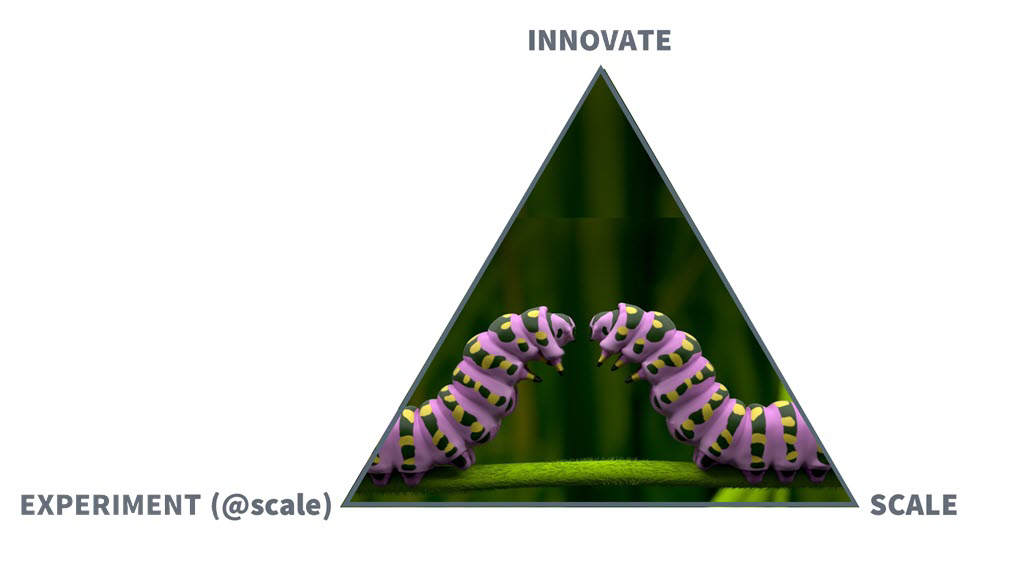
Path towards a butterfly: 2-speed organisation
It is an open door to state that a transformation does not come over night. While fast and rapid results are key to ignite and inspire the organisation. We highly recommend to build a 2-speed organisation.
Acquiring a predictable flow, does not come overnight.
It allows rapid feedback cycles, proving to the organisation that results can be achieved quickly, by delivering minimal viable products [3] within 6 to 8 weeks. Proving to business partners and internal stakeholders the ability to generate value.
[3] Minimal Viable Product: A minimum viable product (MVP) is a new product that is developed with sufficient features to satisfy early adopters and that allows the validation of business assumptions. The final, complete set of features is only designed and developed after considering feedback from the product’s initial users.
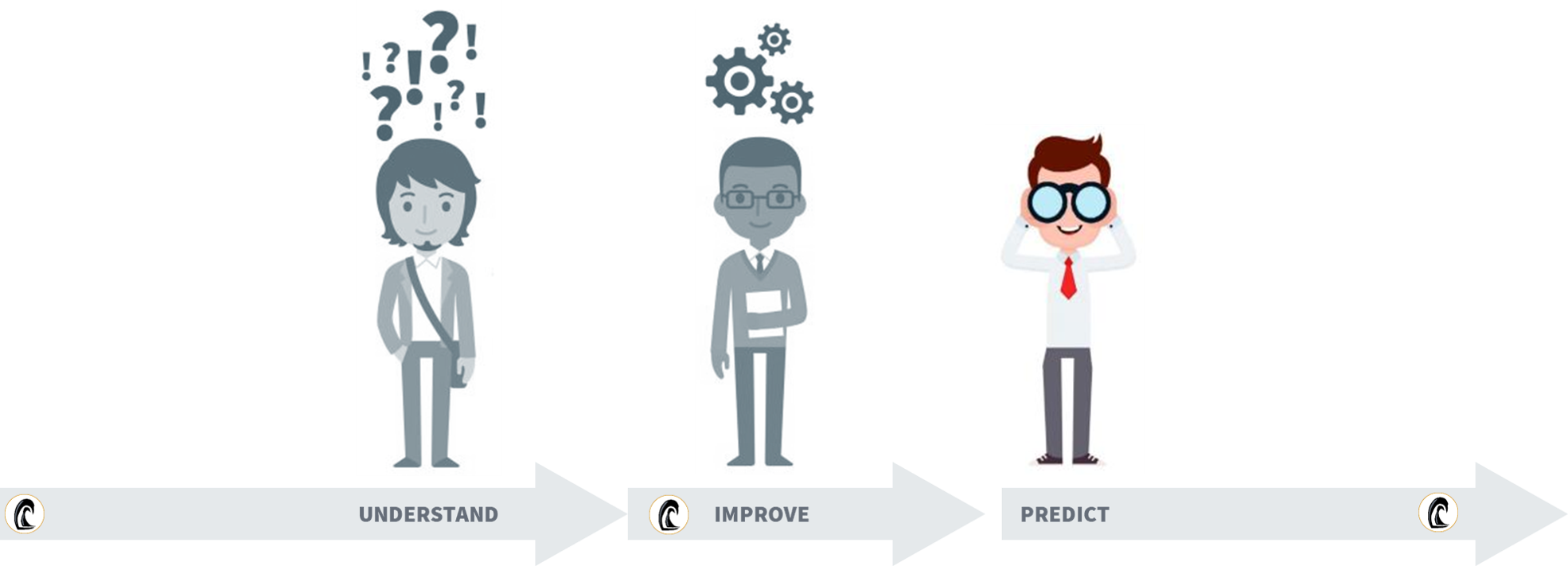
As a first step, focus on Proof-of-Concepts (PoC), that are focussing on the validation of specific (customer behaviour) assumptions. These PoC’s are charactarised by their manageable size and a manageable risk. Staffed with motivated individuals that are open to experiment and doing things differently.
This team will be guided through a transformation process in 3 steps. Helping them to identify the delivery & collaboration challenges at hand. To subsequently start taking improvement initiateives, coached by the agile coach that enriches the toolbox of possibilities. To ultimately reach some form of predictability. From than onwards looping and getting into cycle of contunuous improvement.
Allowing for fast learning and feedback cycles, both from a business perspective as well in the way of working.
Over time these Proof-of-Concepts will evolve towards innovation initiatives that will more focus on testing customer value in domains where research and analytics are missing and in often case also requiring to test the technical feasability.
It serves the purpose of creating the ambassadors in the organisation related to an improved way of working. As well as allowing the organisation to become fact-driven, instead HIPPO-driven.

Path towards a butterfly: collaboration
The past has learned us that our traditional closed system way of working has its limitations when it comes to being agile enough to respond to rapidly changing market conditions and even more when a tsunami is hitting us (e.g. covid-19)
A closed system is characterised by the following:
- limited interactions between groups of stakeholders
- over-formalisation of requirements
- silos between business and IT, instead of business/IT alignment
- Delivery capacity is not made transparent to business stakeholders and requires lenghty alignment cycles
- The delivery flow is not transparent. Deadlines are unclear and often missed.
- The delivery cadence is even less transparent, whereby stakeholders do not have an understanding what is required by when and with what criteria to meet the expectations
- A waterfall driven delivery. Due to the above restrictions a method is applied whereby requirements are fed to the system, and some point a product will come out of the factory. Hoepfully meeting the business expectations. And hopefully fast enough for it to still be relevant in the evolved market conditions.

Keep on doing the things the way we did them before is not going to allow us to suddenly become more agile.
Therefore we need to adopt a new way of thinking, allowing for a better collaboration and hence getting a step closer to improved business agility.
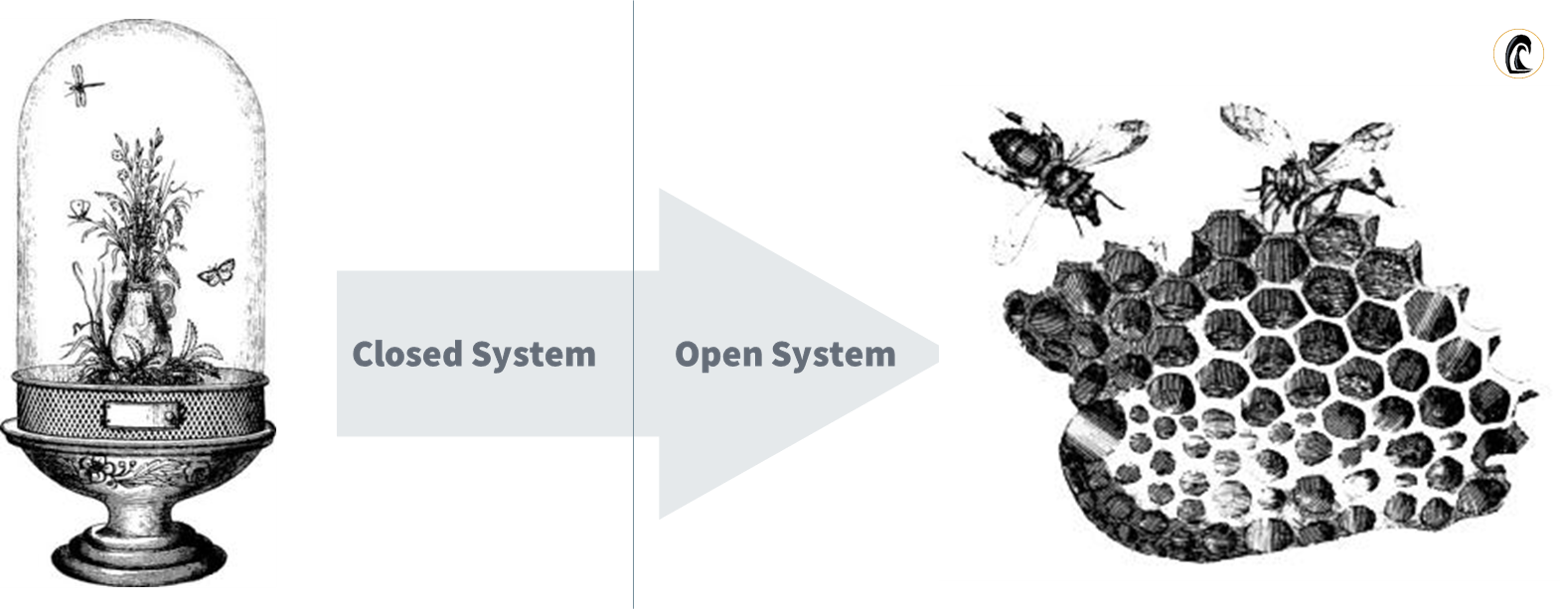
Open system thinking is characterised by the following:
Closed THINKING
- We plan at least one year ahead
- We follow a sequential delivery process
- Changes push the delivery date forward
Open THINKING
- The customer discovers what he needs
- The team discovers how to deliver it
- Many things change along the way
Path towards a butterfly: using agile methodologies to adopt more of the startup mentality
Open systems thinking will bring back the startup mentality that we should aim at cultivating. The ingredients are not all that difficult:
- Simple solutions
All too often we over-engineer solutions, based on the complexity of legacy systems or edge cases which we want to cover. The trick is to truly understand the capabilities of your present systems (rather than customising them) and simplifying the journeys for your customers. - High trust
Most silo-ed organisations lack trust as a result of failed deliveries in the past. By going through our 3-step process (“2-speed organisation”) it focusses on daily transparent communication. Leading to an organic development of trust. Lack of trust implies all sorts of lengthy verification processes, which are needlessly slowing down the organisation. - Very transparent
Again referring to the 3-step process (“2-speed organisation”), daily touchpoints will increase the transparency and by extention the comprehension of either complexity or dependencies. - Very direct
Every agile methodology is focussed on putting the necessary rituals in place, allowing for direct communication to develop itself.
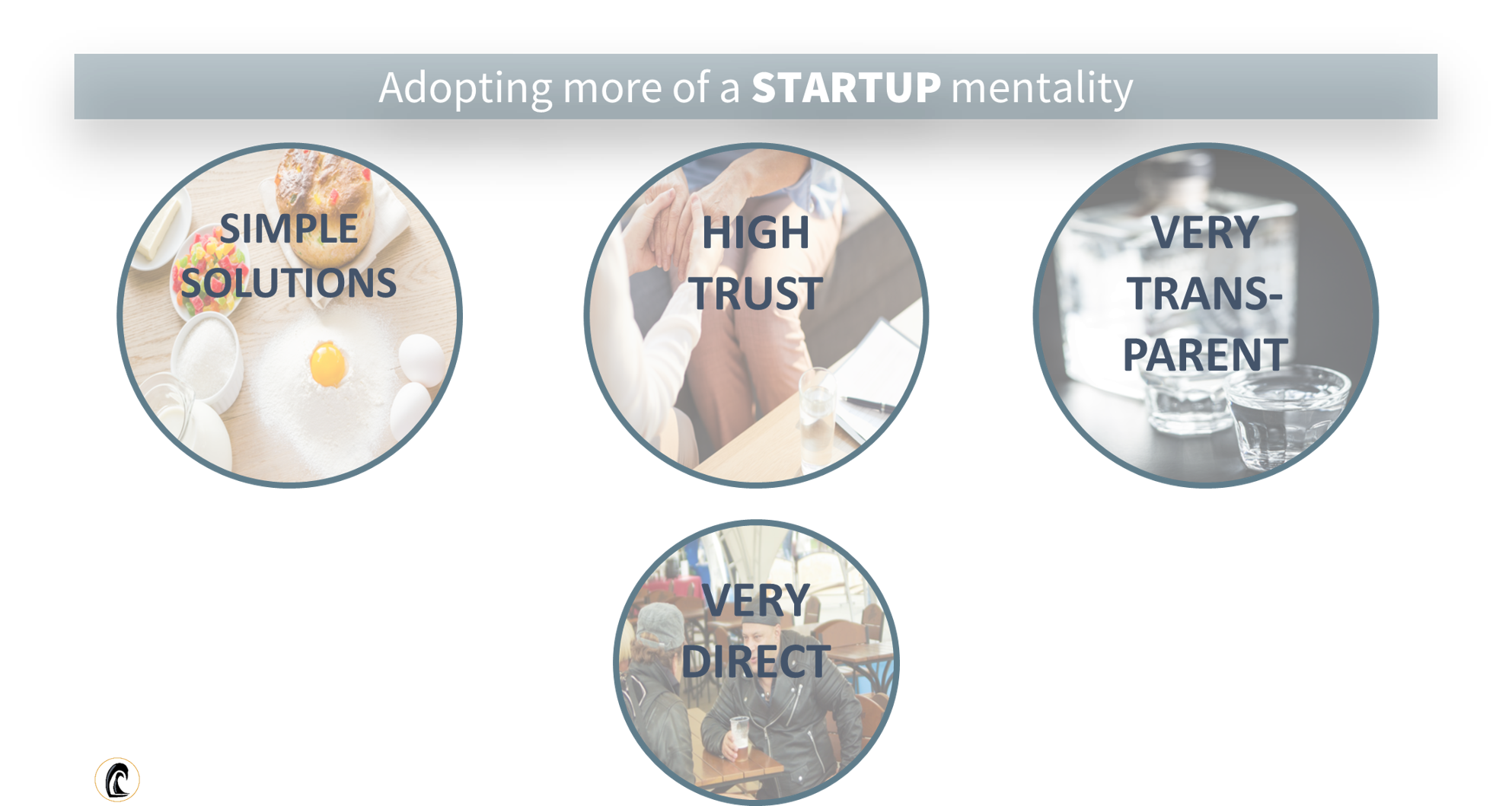
The caterpillar has tranformed into a butterfly, or the organisation is re-born
Usually we don’t talk about ourselves in our articles and tend to deliver content.
As we look back to years of outspoken successfull journeys of delivering organisations that have transformed in a sustainable manner, we feel it is relevant to this article.

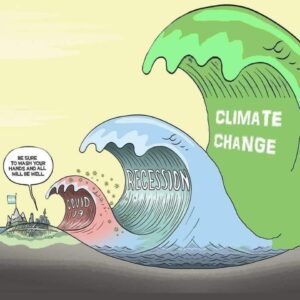
Making the most of the present year, is to ready your organisation to adapt and react fast to changing contexts. Helping you to surf the next wave, and avoid drawning in the tsunami. Building your foundation layer, in combination with the setting up an organisation that has the skills and tools to adapt over and over and over again.
Making the most out of 2020, is based on the following 3 key initiatives in your organisation:
- Define small experiments within which it is safe to experiment. Go to market fast. Learn and interact with your customer.
- Organise for smaller, but a continuous stream of increments.
- Build a digital foundation that is modular, based on your learnings. Shy away from your monoliths of the past.
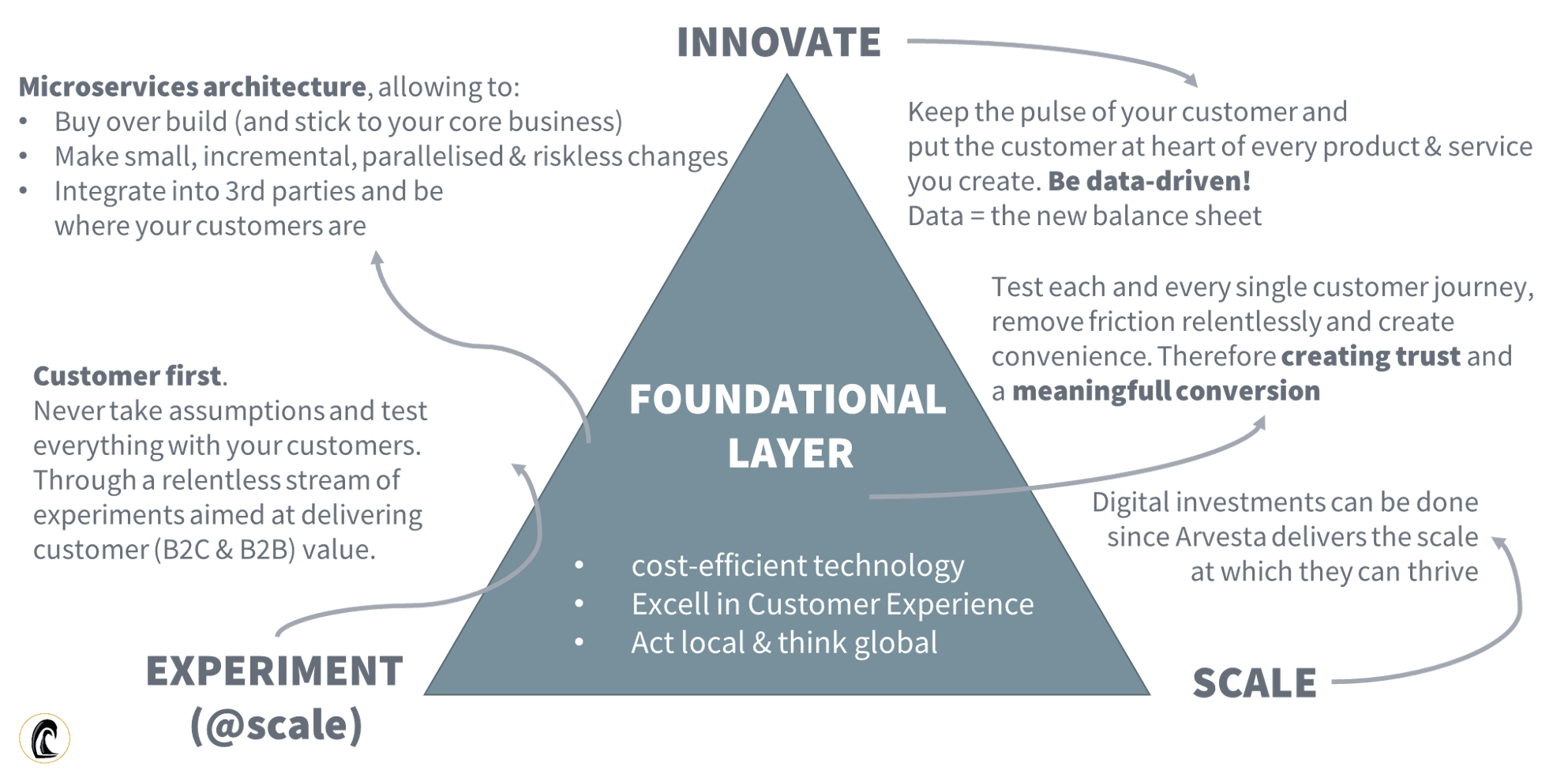
Key principles to drive your organisational change
Based on open systems thinking, we aim to deliver you a smart ecosystem.

That is not reliant on the highest paid person’s personal opinion and decisions. We cultivate an organisation that designs experiments. Renatio spreads this mentality like a virus.
Not bringing ideas, but developing teams to create ideas in a structural manner. And we contaminate the organisation, by create a safe environment for doing experiments. Learning in a structural manner and therefore spawning value-driven innovation.

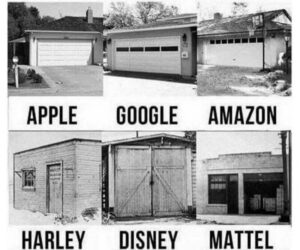
Cultivating a garage culture, by
- doing it
- trying it
- Evaluating
- learning and iterating
Creating an innovative at hearts.
